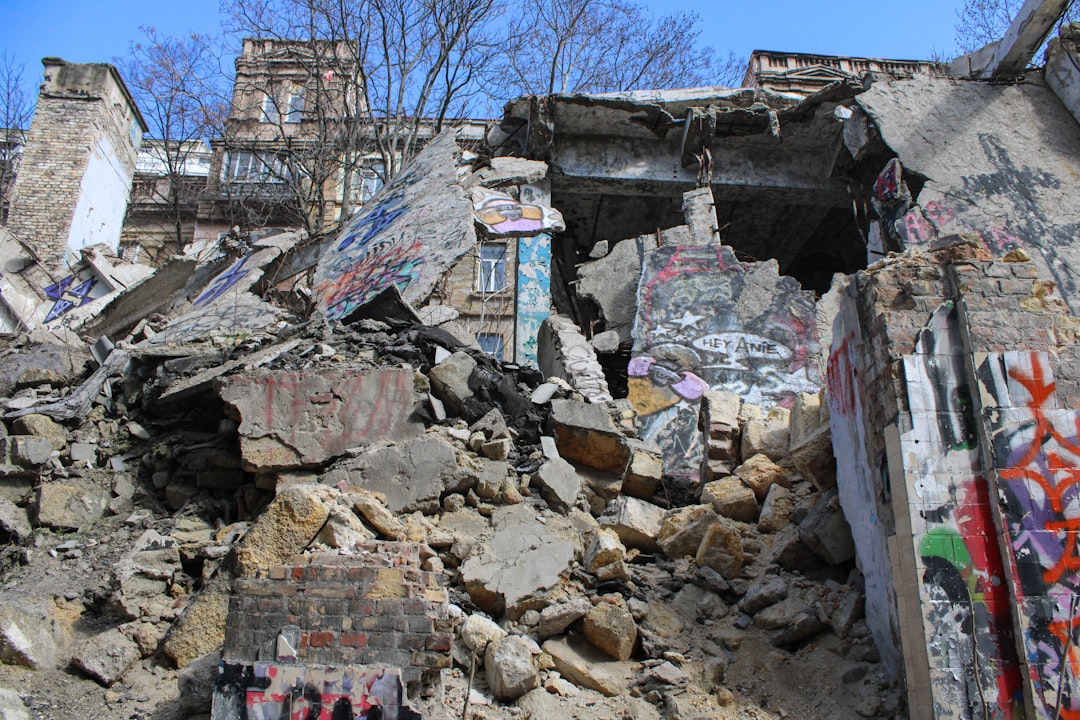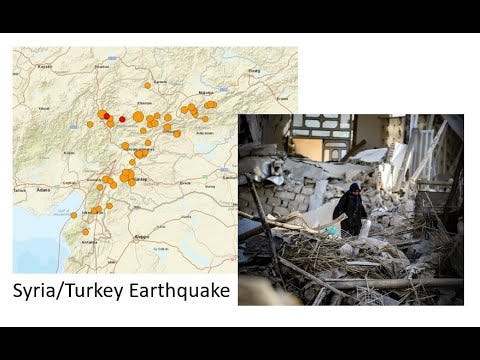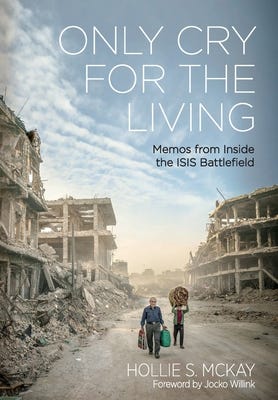VIDEO: What it took for a Syrian family to survive the devastating earthquake, and the role of emerging technology in rescue efforts
It is the sort of tragedy that is hard to wrap one’s head around: at least fifty thousand people are dead, thousands more are unaccounted for, and millions are homeless in the throes of a frozen winter. In just a matter of minutes, two mammoth earthquakes – 7.8 and 7.5, respectively – razed cities, towns and villages in Turkey and Syria to the ground. Humanitarian experts now consider the wrath the worst natural disaster to rock the already poverty-stricken and war-plagued region in over a century.
As grim recovery efforts continue, statistics and endless images of upturned earth and broken bodies desensitize us. But we must not forget that numbers have names, and names have faces.
“My house is destroyed, and everything in it,” a Syrian friend, a young man named Mouhannad in his early thirties, tells me. “I don’t know what kind of life I am living.”
Devastatingly, Mouhannad is one of six million now homeless in the region spanning the two countries and one of a whopping twenty-six million desperate need of assistance. Moreover, as the weeks protract, still riddled by more earthquakes and over five thousand aftershocks, there are increasing concerns over health issues emanating from the freezing temperatures and sanitation to hygiene and the spread of infectious diseases.
I first met then twenty-something Mouhannad amid the darkest days of the Syrian war more than seven years ago. He was studying to be a veterinarian at Al-Baath University when war ravaged his homeland, and he left to volunteer for many humanitarian organizations. However, when bombs rained on his humble home, Mouhannad fled north with his family and into Turkey’s south.

Still volunteering, he rebuilt his life with a new home and freelance work installing internet networks when Mother Nature struck in the early hours of February 6. In a few seconds, his home, job, and everything he had worked to revive was gone again. When I ask Mouhannad how his four young children are coping with the trauma, he pauses for a long time.
“I don’t really know,” Mouhannad says slowly. “God only knows.”
Indeed, the memories are something akin to a horror movie.
“I was awake when the earthquake started, and it was mild until it started to get stronger. Then my children woke up and started screaming. I gathered my family in the middle of the house, and I felt death, so I gave myself to death,” he recalls, his voice cracking. “The electricity went off, then the house started to collapse while I held them, and the layers of walls were shattering above us. We started losing our balance and falling on each other. I thought we would die at that moment, and I began praying to God to save us. I did not know what more I could do. I did not count the seconds, but I felt it was a thousand years.”
Mouhannad remembers the sudden, eerie calm, walking down from his fifth floor into a neighborhood guttered and wasted in the throes of heavy rain.
“All the people in the streets were screaming, and the panic spread as if on the Day of Resurrection. Finally, we went to the middle of the street to avoid buildings falling over us. I could not stop thinking about how my children were in the heavy rain and cold, wearing nothing to protect them,” he continues. “Then a small family with a car saw us, and helped us take shelter from the rain until relatives of the car owner came, so we left to provide a place for them. They told us not to go, but we could not stay.”
Mouhannad recalls weeping in the frost until first light, as buildings came crashing down as he prayed, praying for the friends he knew living in those decimated abodes. At sunrise, he found a truck his family could shelter inside as he ran back to his fractured residence to find blankets and identification papers. Everything else, including his motorbike, was ruined beyond recognition. Mouhannad discovered his friend’s daughter screaming hysterically in the streets, begging for someone – anyone – to help get her family out of the rubble.
“I hurried and asked people for help, so other friends came and started helping. We were able to get the father out from behind the first wall, but his hand was cut off, and he had fractures. Then we sent him with the civil police to the hospital,” Mouhannad says slowly. “After that, we saw his little daughter’s hand behind a second wall. There were great obstacles to extracting because of the concrete in front of it. Then, after many attempts, we got her out and sent her to the hospital. But his eldest son and his wife were stuck under the rubble. We could hear their voices, but unfortunately, after a while, we knew they had died.”
Eventually, he hitched a ride to the Turkish city of Mersin, where he has been throughout the gloomy past few weeks.
“We are now sitting in the street again,” he wrote me Tuesday evening. “We are expecting another strong earthquake again.”
But what made the recent quake so deadly, and why do so many more keep happening?
According to experts, it was only a matter of time before “the big one” happened. The initial earthquake wedged open two giant clefts on the earth’s surface, severing the land by over twenty-three feet for hundreds of miles.
Seismologists have long known that four tectonic plates – colossal rock slabs comprised of the earth’s lithosphere – interface in Turkey. But the East Anatolian fault zone prompted the recent tragedy triggered by the release from the rock-to-rock slippage of the plates. Making matters worse, the East Anatolian fault is considered less active than the North Anatolian, which lets off tension more frequently.

Furthermore, housing and settlements along fault lines are typically thickly populated as they are usually close to mountains and rain, making them attractive places to reside. However, as information slowly unfolds in the aftermath, corruption also played a prominent role in the disaster, with high-rises built not following zone codes and not with the materials needed to withstand such adversity.
Sadly, scammers are already exploiting the earthquakes for their own sick financial gain, funneling money away from legitimate charities with fake organizations and using powerful platforms such as TikTok to lure good-hearted individuals who want to support those in dire need.
Thankfully, there are well-founded ways to help the tens of thousands of individuals on the ground doing God’s work. Moreover, digital and emerging technologies have bolstered relief efforts on a scale I have never seen before. For example, shortly after news of the tragedy broke, cryptocurrencies, from Binance and Tether to Bitfinex and Kucoin, pledged millions in donations.
Emerging technology has proven helpful in other ways, too.
The development of a high-pitched whistle app has enabled some trapped under the rubble to attract attention. Further, youth in the area have developed and set up basic HTML for faster loading open-source crisis assistance websites and platforms – including food distribution centers and blood donation locations. Microsoft Turkyie’s technologies are now freely available to those working in the disaster region, making satellite imagery and the state of infrastructure more accessible to those who need it.
Artificial Intelligence (AI) plays a progressively critical role beyond the bounds of essential recovery efforts, from data filtering and analytics to illuminating humanitarian efforts.
Nevertheless, I still cannot imagine the gut-wrenching horror of losing everything you had known and loved not once – but twice – and having the strength and resilience to pick yourself up and do it all over again. Yet for many Syrians, there is no time for victimhood. Almost everyone is worse off than you, and it makes no sense to complain.
I offer to send Mouhannad and his family money, which he immediately refuses.
“I am looking for a job now, even if it is outside Turkey. I can’t take money; I must work to settle into a house with my family. I don’t know what is next and where I can start a new life with a good job,” he says, cracking with emotion.
I ask if the food at the overstuffed shelter is adequate.
“I do not want people to give me food,” Mouhannad adds, stoically holding himself together. “By God, we cannot eat the food someone else buys.”
For speaking queries please contact meta@metaspeakers.org
Order your copy of “Afghanistan: The End of the US Footprint and the Rise of the Taliban Rule” due out this fall.
For those interested in learning more about the aftermath of war, please pick up a copy of my book “Only Cry for the Living: Memos from Inside the ISIS Battlefield.”
If you want to support small businesses:





